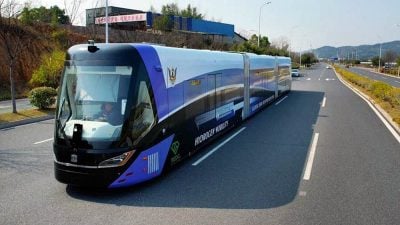NEW YORK: From an ancient Middle Eastern limestone elephant to seventh century Chinese sculptures, New York prosecutors have seized hundreds of priceless artifacts looted from around the globe that have earned it the reputation as a key global hub for art trafficking.
The Metropolitan Museum of Art is among major institutions and collectors who have been forced to hand over works that the city has returned to more than a dozen countries in Asia, Europe and Africa.
The scale of the seizures and repatriations “leaves no shadow of a doubt,” said Christos Tsirogiannis, a forensic archaeologist and art historian specializing in stolen art works.
“New York is one of the world’s hub cities for the illicit trafficking of antiquities,” he told AFP.
Tsirogiannis of the University of Aarhus in Denmark, and David Gill, a professor at Britain’s Kent Law School, have been helping the Manhattan district attorney’s campaign to return stolen art to their country of origin.
Since 2017, prosecutors have repatriated pieces that were looted from around 20 countries between the 1970s and 1990s.
They have included works from ancient Greece, the Roman and Byzantine empires, Iraq, China, India and Southeast Asia.

Collectors
The pace has quickened in the last two years.
Under Alvin Bragg, who became district attorney in January 2022, more than 950 pieces worth $165 million have been returned to several countries including Cambodia, Pakistan, Egypt, Turkey and Italy.
At a ceremony at the Chinese consulate in New York last month, Bragg handed back to Beijing two 7th century stone sculptures valued at $3.5 million.
The works had been sawn from tombs in the 1990s, exported and then sold illegally. Well-known Manhattan-based collector Shelby White loaned them to the Met from 1998 until their seizure this year, Bragg’s office said.
White, 85, is a billionaire philanthropist and Met trustee. Her home was subject to searches by Bragg’s team in June 2021 and April 2022.
Bragg announced last that month 89 works with a total value of $69 million had been seized from White, who prosecutors do not accuse of wrongdoing. He thanked her “for her cooperation.”
The Art Newspaper reported in December that White had returned pieces to Italy and Turkey, with the businesswoman telling the website: “I really don’t have anything to say.” AFP has not been able to contact her.
Tsirogiannis and Gill believe that White’s acquisitions made with her late husband Leon Levy “may have been unwise,” especially those amassed after the 1970 UNESCO Convention to prevent the illicit trafficking of cultural property.
Tsirogiannis points out that White returned ten works to Italy and two to Greece prior to 2008.
“So she should definitely have at least (had) serious doubts on the origin and the status of the rest and should have checked them all these years before the recent confiscations that took place,” he said.
Gill cited White’s only known public statement on the issue in an interview she gave in 2007 when she said: “If you go to Sotheby’s or Christie’s and buy something at a public auction, you don’t think you are doing anything inappropriate.”
The most recent restitution took place on May 19, when prosecutors returned to Iraq a limestone elephant and an alabaster bull from the Sumerian civilization “stolen during the Gulf War and smuggled into New York in the late 1990s.”
The bull was found in Shelby’s private collection and Bragg pledged he will not allow New York to be “safe harbor for stolen cultural artifacts.”

Louvre
Other art dealers have been forced to return works. Collector Michael Steinhardt, who had a room named after him at the Met, handed back 180 antiquities worth $70 million following an out-of-court settlement in 2021.
Manhattan-based art dealer Subhash Kapoor was sentenced to ten years in prison in India in November following a decade-long international investigation.
In September, Bragg returned 16 pieces to Egypt, including five seized from the Met, as part of a twin investigation between New York and Paris authorities in which the former president of the Louvre, Jean-Luc Martinez, was charged.
Martinez denies ignoring warnings about false certificates that faked the origin of the works.
Without commenting on the case, Louvre president Laurence des Cars told AFP during a visit to New York in May that “major museums should know the history of their collections” and that “the history of the Met’s collections was not that of the Louvre.”
Last month the Met announced it would examine the provenance of “several hundred or more” objects that were possibly stolen from their country of origin, and then return them where necessary.

ADVERTISEMENT
ADVERTISEMENT








































